Deltek 45th Clarity A&E Industry Study: The Latest Trends Impacting A&E Firms

Remaining well-informed about the industry's current state is paramount, particularly when strategizing for your firm's future. Whether you're contemplating investment in cutting-edge technology, enhancing profitability, or reassessing staffing requirements, benchmarking your firm and identifying prevailing challenges and trends within the industry is pivotal for positioning your architecture and engineering (A&E) firm for success.
This week, Deltek unveiled the 45th Annual Deltek Clarity Architecture and Engineering (A&E) Industry Study for the United States and Canada. Deltek conducts this yearly survey to gauge benchmarks concerning key performance indicators, attain insights into current and future market conditions and gain a deeper understanding of industry trends. The latest findings encapsulate responses from more than 650 firms, representing a diverse spectrum of small, medium and large companies.
Get the Latest Industry Trends & Benchmarks
45th Deltek Clarity A&E Industry Study is Now Available
Every year, A&E firms confront a dynamic landscape, seeking strategies to navigate industry shifts and competitiveness. The Deltek Clarity A&E Industry Study is a vital resource for firm leaders, offering comparative analysis with industry peers and invaluable insights to leverage technology to drive business growth.
Current A&E Industry Trends
In the last year, key financial metrics for A&E firms remained stable. Firms remain optimistic, with net revenue growth forecasts that are expected to grow by nearly 11% year over year. However, challenges persist, with ongoing talent shortages prompting firms to seek operational efficiencies and cross-train employees. While high turnover rates have decreased, staff shortages persist as firms look to not only backfill, but create new positions to support growth, affecting project delivery and forcing firms to do more with less.
Artificial Intelligence (AI) Adoption is Growing with an Urgent Need for Education and Support
The adoption of artificial intelligence-powered tools is growing slowly. However, 62% of A&E firms expect AI to improve operational efficiency. There's a pressing need for education, support and practical tools to facilitate the understanding and application of AI across firms of different sizes.
AI is expected to become integral to architecture and engineering practices and in some cases, is already influencing various software tools used across the industry for design, planning, construction and business operations. Firms are leveraging generative AI for marketing and proposal creation, data summarization, 3D modeling, rendering and data analysis. Traditional AI is also utilized for computer vision, design analysis, calculations and business process automation applications.
Firms anticipate AI to enhance operational efficiency, project timeline/delivery and reduce overhead costs. These expectations underscore the pressing need to refine internal processes to achieve cost savings and operational enhancements.
While the potential benefits of AI in streamlining workflows and reducing costs are apparent, many firms still need to embrace it fully. Executives familiar with AI capabilities and the possible impact on their firms and clients will position themselves as industry leaders.
Continued Need to Upskill Staff
Attracting and retaining skilled and competent project managers is still challenging for firms. They are tackling these issues by setting their sights on formal training and upskilling their existing employees. This strategic move is now deemed essential to increase engagement, reduce turnover and limit project volatility. According to the study, only one in five firms reports that at least 75% of their project leaders possess formal project management training. Firms are turning to solutions that supplement internal training programs and provide flexibility for trainees to engage as their schedules permit, such as training provided by third parties. As project managers develop their skill sets and establish or improve best practices, we expect even more gains in project performance as internal stakeholders will have greater access to an integrated picture of a project's needs, resources, limitations and opportunities.
In today's workplace, balancing staff is challenging, often leading to overburdened or underutilized staff. In addition, disconnected spreadsheets and siloed teams make it difficult for project managers to ensure the right people are on the right projects without burnout or project delays. More than 75% of firms are still mostly reliant on manual data entry and spreadsheets to manage their resources and project delivery despite more advanced tools available in the industry. The good news is that nearly 60% of firms expect to invest in project management business applications in the next 12 months, showing an interest in making a change and truly helping project teams work more effectively and efficiently.
Strategies to Improve Business Success
Although the overall business outlook is positive, many firms continue to struggle with limited resources, which can lead to more challenges in business development. By embracing new opportunities to cross-train employees, networking with new teaming partners, and expanding the use of formal business processes, firms can ensure that business development remains a priority and the pipeline continues to grow to achieve aggressive year-over-year revenue growth targets. Emerging technology and tools, such as AI-powered content creation, can also help amplify these efforts, freeing up time and resources for more strategic pursuits. Marketing centered on thought leadership is becoming increasingly important in today's market. By creating engaging content showcasing expertise, firms can attract and retain clients while establishing themselves as an industry thought leader. The latest study shows revenue from the top three clients increased, demonstrating the importance of diversifying your client base. By teaming up with others to identify and close diversified opportunities, you can continue to grow and succeed.
Navigating Economic Uncertainties and Driving Business Excellence
The 45th Annual Deltek Clarity A&E Industry Study highlights the enduring confidence of architecture and engineering firms despite economic uncertainties. Business challenges persist, necessitating a focused approach across all firm sizes to remain competitive, retain and engage employees and boost profitability.
This study is a valuable resource for firms. It offers insights into how a firm compares to others in the industry to identify strengths and areas for improvement. By benchmarking against similar firms, companies can clarify their path to success. The Deltek Clarity A&E Industry Study provides benchmarks and industry insights that encourage collaboration and pinpoint opportunities for leveraging tools and technology to enhance business performance.
Deltek positions itself as a software provider and a trusted partner, offering industry-leading solutions to help companies achieve clarity in their operations and strive for excellence. Deltek aims to assist firms in reaching their future state through technology, business process automation and industry best practices.

Deltek Project Nation Newsletter
Subscribe to receive the latest news and best practices across a range of relevant topics and industries.



